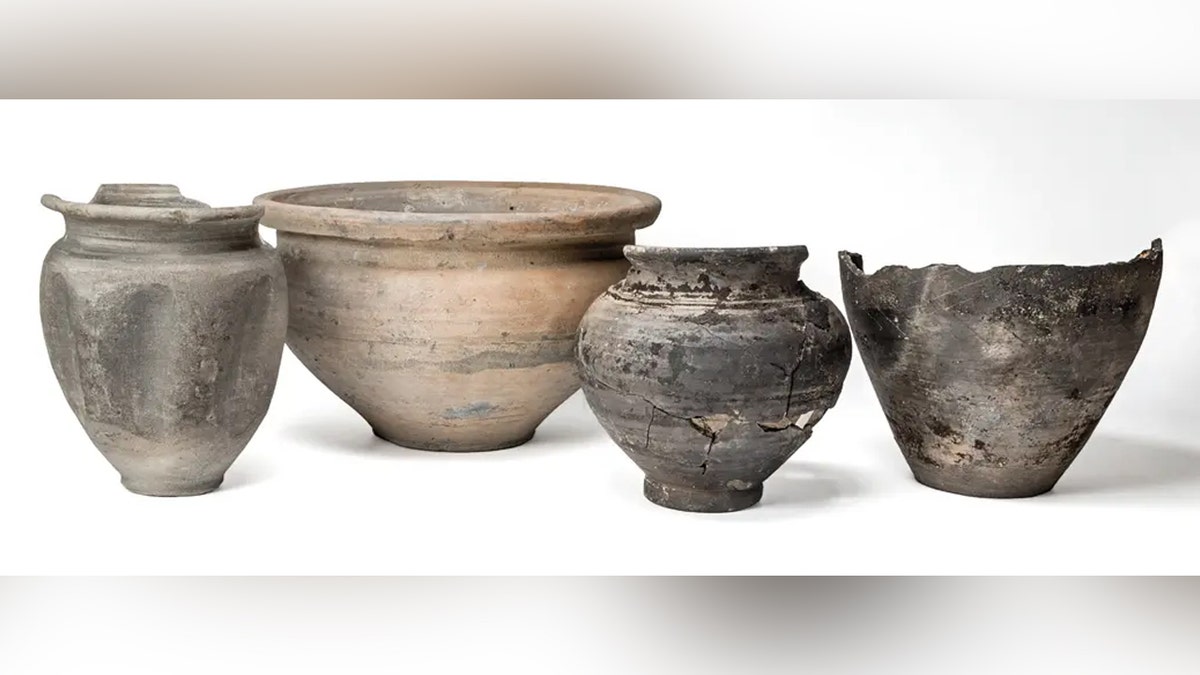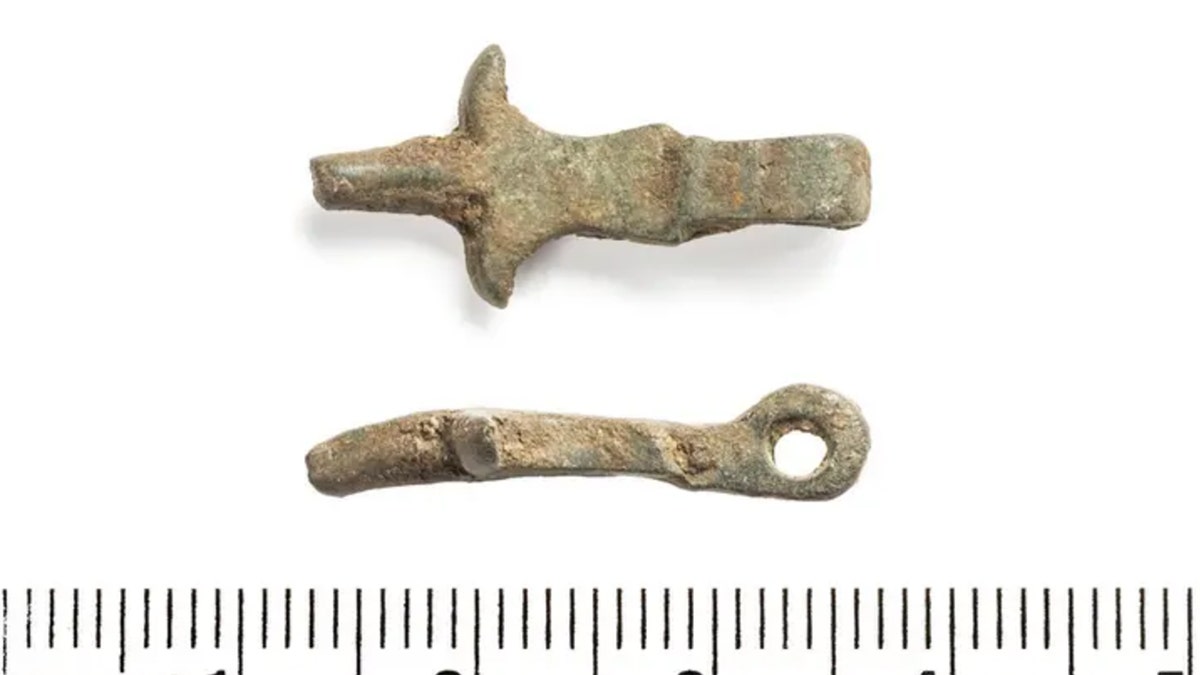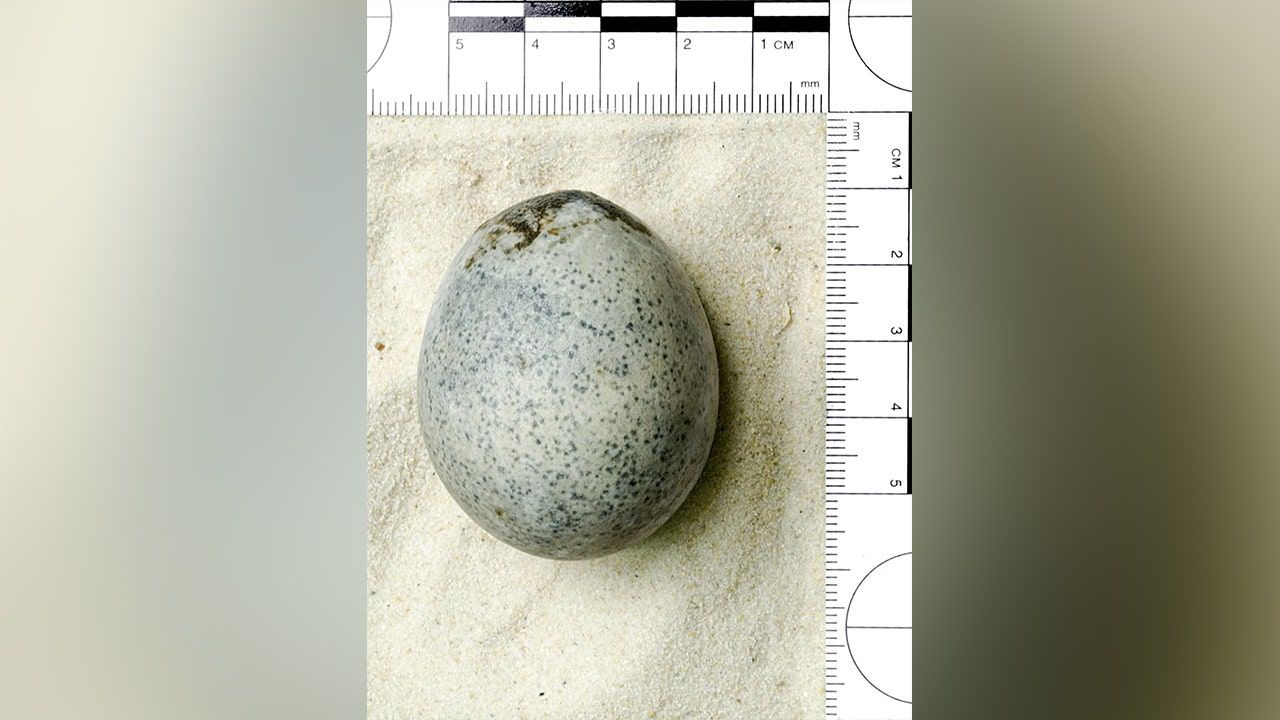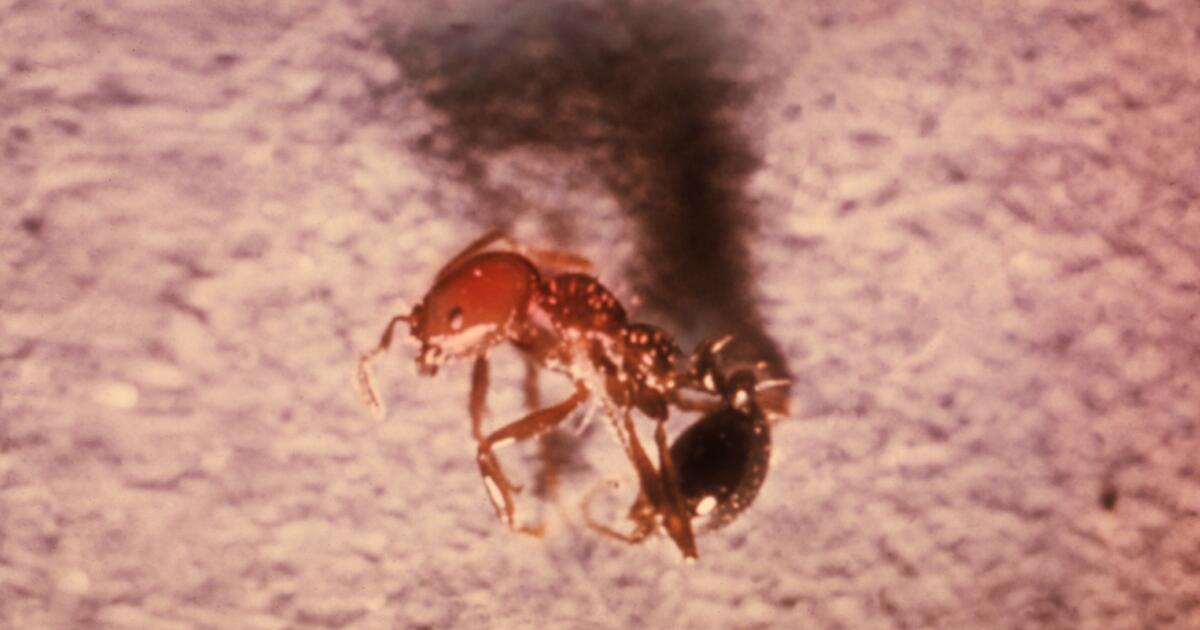UK archaeologists were shocked to learn that a 1,700-year-old ancient Roman egg discovered in Aylesbury, Buckinghamshire, reportedly still had a yolk inside.
The discovery of the egg was announced in December 2019, after archaeologists from Oxford Archeology completed an excavation in Aylesbury between 2007 and 2016.
Experts found a basket containing four eggs in a flooded well, which they believe may have been used as a “wishing well.” However, when the eggs were removed from the environment, three of them cracked and released what was described as a “potent stench.”
The remaining egg survived and, according to the BBC, underwent a micro-CT scan that revealed what was inside.
WRECK OF MERCHANT SHIP THAT SANK IN 1940 FOUND IN LAKE SUPERIOR
This egg was thrown into a well of water, possibly as part of a Roman funerary rite. (SWNS)
Oxford Archeology senior project manager Edward Biddulph supervised the excavation and described to the media outlet that it was “shocking” to find the only intact egg from the period in Britain, but “absolutely incredible” that the egg still had its contents. original.
“We were absolutely shocked when we saw the content there, as we might have expected it to have been leaked,” he said.
The excavation took place before the housing development at Berryfields in Aylesbury, and along with the eggs, archaeologists found dozens of coins, shoes, wooden tools and what was described as a “very rare” basket.
Biddulph said at the time of the announcement that the “wishing well” may have functioned similarly to modern wishing wells.
HIKER IN ISRAEL DISCOVERS AN ANCIENT BEETLE THAT DATE ALMOST 2,800 YEARS OLD

Remains of a Roman mirror and vessels were also discovered. (SWNS)
“Passersby would perhaps have stopped to throw offerings to make a wish to the gods of the underworld,” Biddulph said, adding that the eggs are a rare find. “The Romans associated eggs with rebirth and fertility, for obvious reasons. We've found chicken bones and broken eggshells in Roman tombs in Britain before, but never a complete egg.”
The archeology company did not immediately respond to questions from Fox News Digital about the latest egg-related discovery.
The BBC reported that conservator Dana Goodburn-Brown, who carried out additional work on the egg, took it to the University of Kent for analysis.
ARCHAEOLOGISTS DISCOVERED 1,700-YEAR-OLD ROMAN EGGS AND ACCIDENTALLY RELEASED THE 'WORLD'S OLDEST STIN BOMBS'

A belt buckle and a fragment of a horse harness were found, as well as evidence of a wooden bridge over the Thames. (SWNS)
“It produced a striking image which indicated that the egg, as well as being intact – which is quite incredible – also retained its liquid inside, presumably from the yolk, albumen etc.,” Mr Biddulph said.
The egg also traveled to the Natural History Museum in London, where removing the egg's contents without destroying it was discussed.
Having traveled to various locations, the egg is now located in Aylesbury at the Discover Bucks Museum, as experts continue to determine how to obtain the contents of the egg without breaking the shell.
CLICK HERE TO GET THE FOX NEWS APP
“It's a bit like blowing an egg, but obviously it's a much finer process,” Biddulph told the BBC.
“There is enormous potential for future scientific research, and this is the next stage in the life of this extraordinary egg.”












